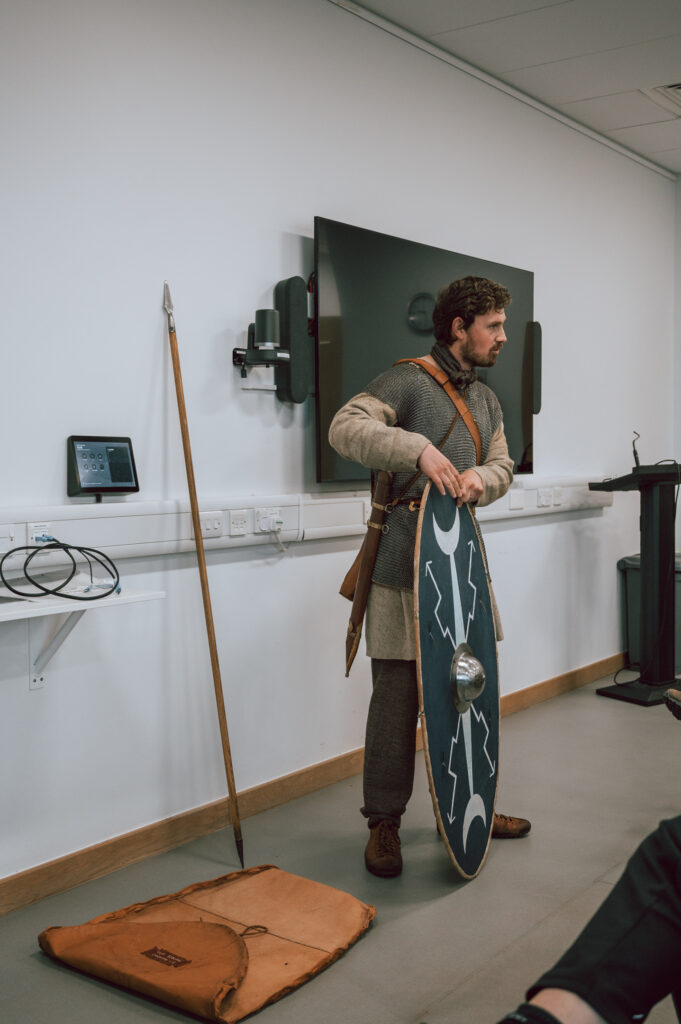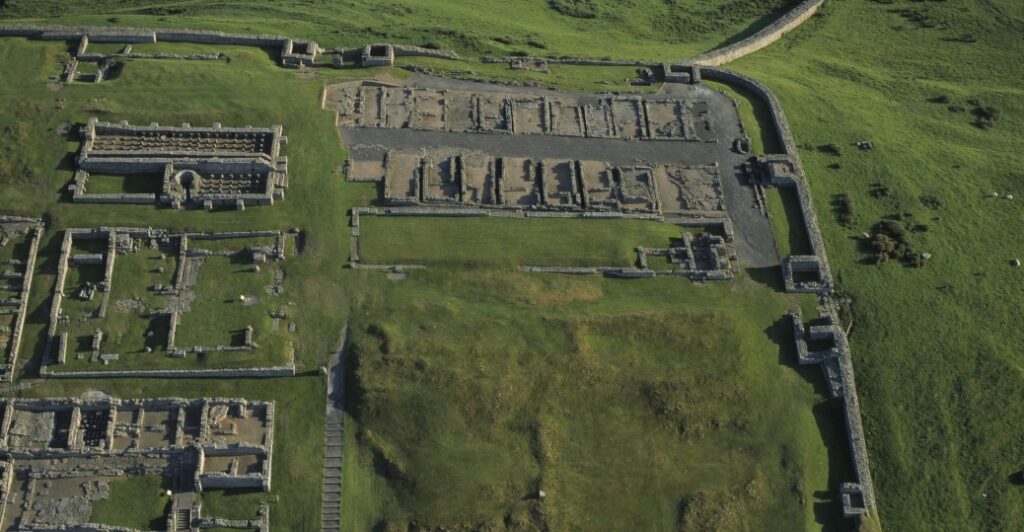In this blog, we’re looking at the West Gate of Housesteads Roman Fort and finding out about the fascinating history of the forts along Hadrian’s Wall. Interestingly, when Hadrian’s Wall was initially constructed, it was designed without forts integrated into its structure. However, a pivotal decision by Emperor Hadrian led to the inclusion of these formidable structures, significantly bolstering the defence capabilities of Britain’s northern frontier.
Impressive Roman Forts

These forts are impressive not only due to their sheer size but also because of the diverse troops they housed. Soldiers stationed along Hadrian’s Wall were drawn from across the Roman Empire, including regions we know today as Western Europe – Dutch, Belgian, German, French, Spanish, and even British troops. Additionally, marines from what is now Iraq were positioned in South Tyneside at Arbeia Roman Fort, and Syrian archers were well-documented along the Wall as well.
These soldiers were specifically chosen for their unique specialisms and stationed across various forts, contributing to a complex military network. A typical cohort stationed along Hadrian’s Wall, for instance at the Brocolitia Roman Fort, consisted of approximately 480 soldiers. Some forts, like Segadunum at Wallsend, housed both infantry and cavalry units – a testament to the strategic diversity of Roman military planning.
Roman Strategy
At places like Housesteads, we see double-strength units with about 800 soldiers, enhancing the fort’s defensive and offensive capabilities. Similarly, double-strength cavalry units, consisting of roughly 712 cavalrymen, were not uncommon. It’s fascinating to note from Roman documents that soldiers were not always stationed permanently at one location. They often moved between forts or were even sent to other significant locations like York or London, depending on strategic needs.

The impact of these troops on local populations was profound. As soldiers retired and settled, they married into the local community, gradually transforming the local culture from native British to a Romanised one. This integration brought about significant cultural changes, affecting the language, customs, and overall societal structure.
On a military front, the forts served not only as defensive outposts but also as bases from which the Romans could conduct northern campaigns. For example, during the reign of Septimius Severus, efforts were made to push north and conquer the remaining parts of northern Britain. The forts along Hadrian’s Wall played crucial roles as staging posts and supply depots for these campaigns.
In summary, the forts of Hadrian’s Wall were instrumental in shaping the Roman presence in Britain. They were pivotal not just for their military might but also for their role in the cultural and societal integration of the Roman Empire into Britain. The legacy of these forts and their influence on Britain’s historical landscape is both deep and enduring.

I hope this dive into the history of Hadrian’s Wall and its forts has sparked your interest. If you’re as fascinated by these stories as I am, consider joining one of our guided tours to explore these ancient sites and experience their stories firsthand.


